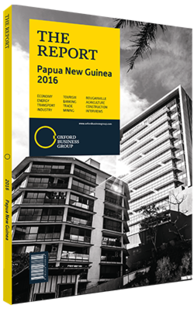OBG talks to Michael Donnelly, CEO, Telikom

Interview: Michael Donnelly
What benefits would a Melanesian underwater cable have compared to a new link to Australia?
MICHAEL DONNELLY: A study conducted by the World Bank states that a new underwater cable to connect Papua New Guinea through Honiara in Solomon Islands, Vanuatu and then Fiji would not be cost-effective, even though the developer, PNG DataCo, had originally signed a contract with Exim Bank of China and ICT provider Huawei to actually build the cable. The initial estimate for this initiative, known as the ICN2 cable, would amount to $72m and account for only 1000 km of underwater fibre-optic cables. However, reaching Sydney, 3000 km away from Port Moresby, with a cable running parallel to the existing one – which has aged and runs at 80% – would cost $85m. Besides the higher cost of the ICN2 cable, due in part to a privately owned link between Fiji and Port Villa inflating the price, the sovereign risk of such a project would be much higher than bringing a new cable to Australia, which is the most liquid market in the Pacific. From Sydney it would also be much easier to tap into the connection to the US.
Financially, the proposed Melanesian cable does not make much sense. For this reason, it was never put to the National Executive Council for approval. From a market point of view though, a new cable would certainly bring clear advantages to PNG’s consumers, as there is a direct correlation between internet penetration and rising capital income. Unfortunately, PNG is still at the bottom when it comes to internet penetration, even compared to Africa, and it is widely proven that when people have access to the internet in rural communities, they usually stay in their villages instead of migrating to urban areas, as their capacity for assessing the market for agricultural products improves enormously.
How would the market in PNG benefit from a wholesale separation of assets to foster competition?
DONNELLY: As far as we are concerned, there are no examples in first-world markets where such a scenario was applied – not in the US, not in Europe and not even in Australia. This concept was developed in PNG, before the restructuring of the state-owned enterprises (SOEs), during a time when the Independent Public Business Corporation (IPBC) had operational capacities and could direct the boards on such decisions.
The IPBC’s replacement – Kumul Consolidated Holdings – deals only with industrial assets, including telecoms, and was stripped of the sort of power that the IPBC had. It cannot direct the boards so clearly, as SOEs now operate as any other public company. Transferring our wholesale assets to PNG DataCo, a company that has so far been purely Treasury-funded, would mean stripping Telikom of any cash-generating ability, which would jeopardise the survival of the company, while PNG DataCo would essentially replicate our wholesale infrastructure. The real value behind a structural separation rather than a business separation, therefore, remains questionable at this point.
How important is it to have a reliable 4G network to improve the transfer of data?
DONNELLY: Up to 85-90% of the coverage in PNG is through a 2G network, which limits the transfer of data among businesses and consumers. In recent years the telecoms industry transitioned from an “ears” market to an “eyes” market, and that is why the screens are becoming bigger, as people look at their handsets much more than they actually use it as voice device. Unfortunately, only 16% of the population in PNG has access to the internet, according to the World Bank, which amounts to less than 400,000 people if we assume that PNG has 8.5m inhabitants. That is an extremely low ratio, and Telikom inevitably has a lot of responsibility for this, as the company hardly invested in any new infrastructure during its recent history. It is only recently that we launched a big three-year-long capital upgrade, which will see the addition of 200 new towers in 2016 alone, an investment of PGK400m ($136.5m).
You have reached the limit of premium articles you can view for free.
Choose from the options below to purchase print or digital editions of our Reports. You can also purchase a website subscription giving you unlimited access to all of our Reports online for 12 months.
If you have already purchased this Report or have a website subscription, please login to continue.

